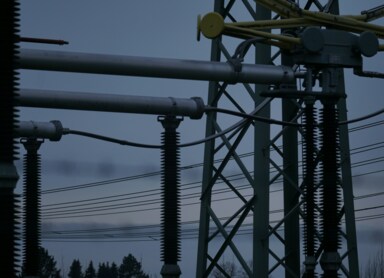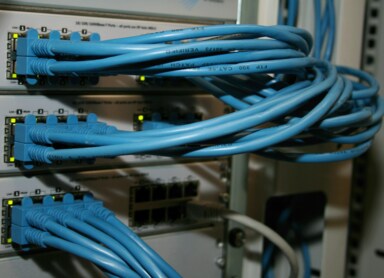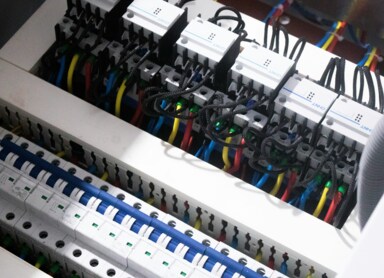How to read an electricity invoice? Step by step instructions
Electricity is indispensable to us on a daily basis, so we all face paying our electricity bills - both consumers and businesses. However, reading an invoice from a supplier often causes a lot of problems. How to read an electricity invoice?
Interpreting Your Electricity Bill – Key Information to Understand
The amount on your electricity bill reflects more than just the amount of energy you've consumed. Decoding the bill can be tricky because it's more than just adding a few components together.
Firstly, the language used is often technical and complex. Terms like cogeneration charge, transition charge, or capacity charge may mean little to the average consumer. Electricity rates can also vary depending on the tariff and the time of consumption. Additionally, there may be errors on the bill, which could result in an incorrect final amount. Every electricity bill consists of the following components:
- Meter readings
- Amount of electricity consumed
- Distribution charges
- Commercial charges (from both the seller and distributor)
- VAT and excise tax
Remember, it's the distribution system operators (OSD) who are responsible for billing your energy usage, not the electricity seller. Currently, Poland is divided into five main OSDs:
- PGE Dystrybucja S.A.
- Tauron Dystrybucja S.A.
- Innogy Stoen Operator Sp. z o.o.
- Enea Operator Sp. z o.o.
- Energa Operator S.A.
While the format of the bill may differ slightly between operators, the information provided is generally the same.
Elements of an Electricity Bill – What They Mean and How to Interpret Them
When you first look at your electricity bill, the various sheets and data might seem overwhelming. Let’s break down the structure, starting from the top.
At the top of the bill, you'll find the buyer’s and seller’s details. This is also where your customer number and the amount due will be displayed, along with any outstanding balance and the payment deadline – useful if you don't want to dive into all the details. Payment information, such as transfer numbers or online payment options, is often found in this section too.
More detailed information is on the second page of the bill. Here, the Energy Supply Point (PPE) is identified (essentially, your meter; if you have multiple meters, each PPE will have a different number). The seller also indicates the tariff group, like G11 or G12, which affects how your electricity costs are calculated depending on the time of day. The calculation of charges is shown in a table, which includes:
- Energy sales breakdown: This shows how the electricity sales charge is calculated. It's usually a simple calculation – the amount of energy delivered multiplied by the price per kilowatt-hour. This section also includes a commercial fee related to customer service.
- Energy distribution breakdown: This is where you’ll find all those obscure terms.
VAT is added to all charges. At the bottom of the bill, you’ll find the gross amount – the total you need to pay for that billing period.
How to Read an Electricity Bill – Step by Step
Let’s take a closer look at the distribution charges, as these usually cause the most confusion. Distribution charges are divided into fixed and variable components. Fixed components, which you cannot influence, include:
- Subscription charge: This covers the cost of reading and monitoring the meter. It depends on the type of meter and the tariff group.
- Fixed network charge: This reflects the costs of maintaining and operating the power grid.
There are more variable components, including:
- Variable network charge: This is related to the cost of distributing electricity.
- Quality charge: Ensures that the electricity supplied to the PPE meets the required standards.
- Cogeneration charge: Covers the cost of providing energy from high-efficiency cogeneration, where both electricity and heat are produced simultaneously. If these processes were separated, they would be much less efficient.
- Renewable energy charge (OZE): Covers the costs of supporting renewable energy producers participating in auction systems or receiving tariffs or market price supplements.
- Capacity charge: Related to energy security, ensuring that electricity deliveries are secured for consumers.
- Transition charge: Covers the costs associated with prematurely terminating contracts.
VAT is also added to each of these components.
Electricity Bill for Solar Installations – Specifics and Analysis
If your company has installed photovoltaic (PV) systems, your electricity bill will be slightly different. Differences also occur depending on whether you’ve opted for a net metering system or variable pricing (net billing). Check the second page of the bill to see exactly what’s changed.
How to Read an Electricity Bill with Net Metering
In the case of net metering, the bill includes items such as:
- Active energy consumed: The amount of electricity drawn from the power grid when the photovoltaic system generates insufficient power.
- Active energy delivered: The surplus energy produced by the PV system that has been fed back into the grid.
- Source power: The power capacity of the photovoltaic panels.
- Correction factor: Indicates what percentage of the energy fed into the grid can be taken back. This is 0.7 or 0.8, depending on the power of the PV system.
Excess energy can be recovered from the virtual energy storage within the next 12 months.
Interpretation of an Electricity Bill with Net Billing
With net billing, the bill is similar to net metering, but instead of source power and a correction factor, you’ll find:
- Prosumer deposit balance: The monetary value of the electricity you’ve fed into the grid. These funds can be used within the next 12 months but only for purchasing electricity. They cannot be used to cover charges like the cogeneration or commercial fees.
- Monthly market price of electricity: The price at which the value of the electricity fed into the grid will be determined. This price is set by the Market Information Operator for each calendar month.
How to Control Electricity Costs – Practical Tips and Savings
If you notice that your company’s electricity bills are rising significantly from month to month, it’s worth investigating why this is happening. What can you do to better control your electricity costs?
First of all, regularly analyze your electricity charges. If any components seem unclear, contact the bill issuer immediately to clarify. Remember, you always have the right to file a complaint and dispute the charges.
If you’re using renewable energy sources like solar panels, make sure your investment is well-planned. Complement your PV system with energy storage to avoid losses, regardless of whether you’re using net metering or the Next-Day Market pricing. Optimize self-consumption so that it matches energy production as closely as possible. It might also be worth switching your electricity supplier. This is allowed under the Energy Law Act.
Struggling to find ways to save energy in your business? Visit our website to learn how we can help your company.
1 https://isap.sejm.gov.pl/isap.nsf/DocDetails.xsp?id=wdu19970540348






